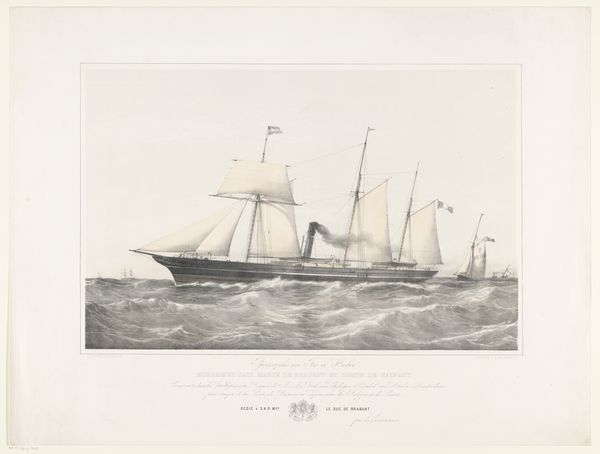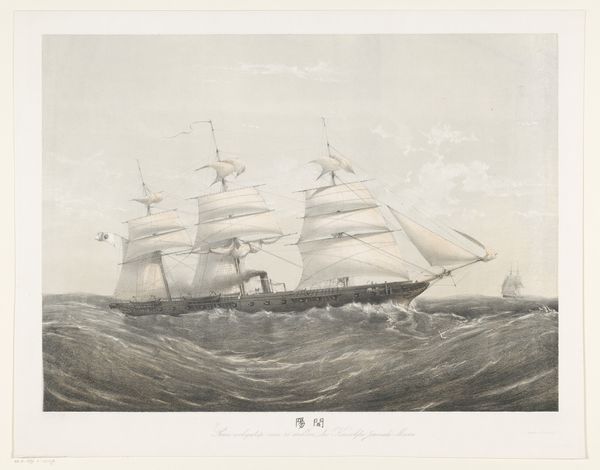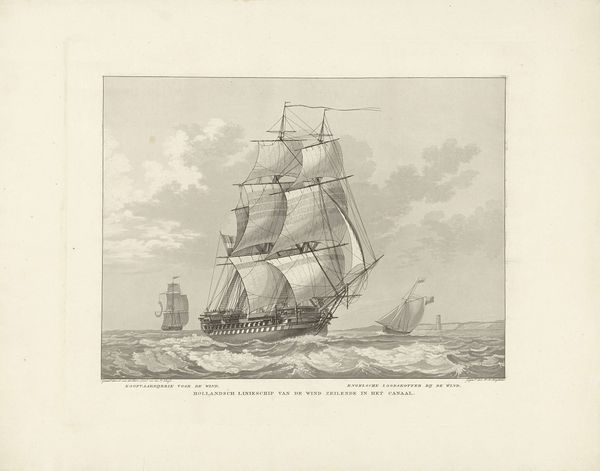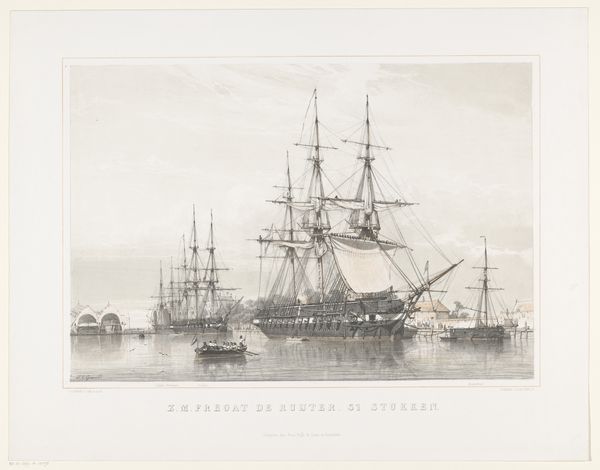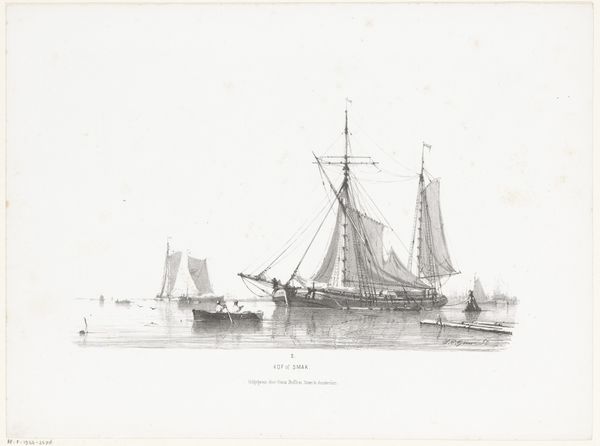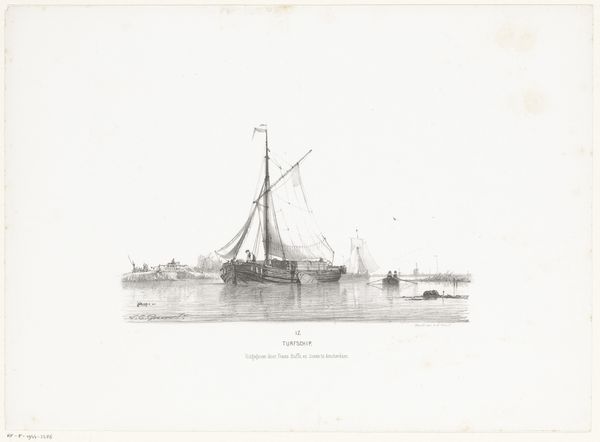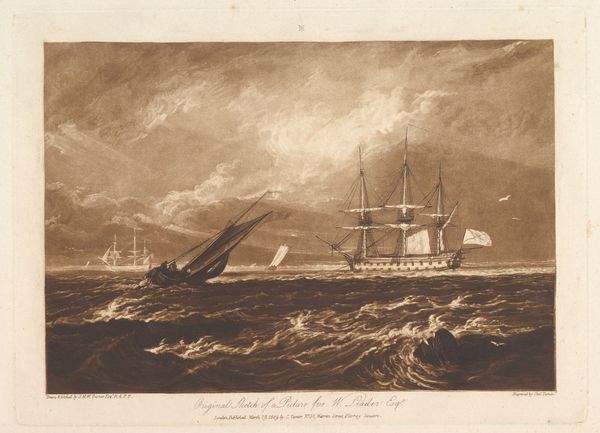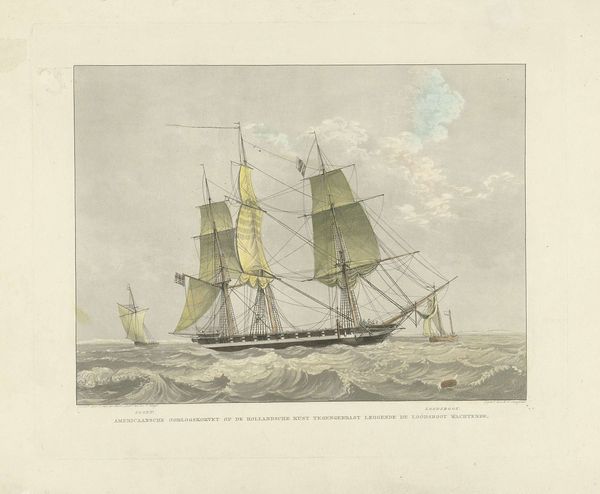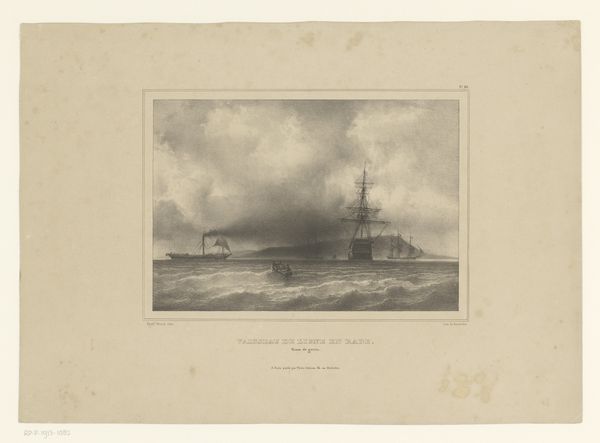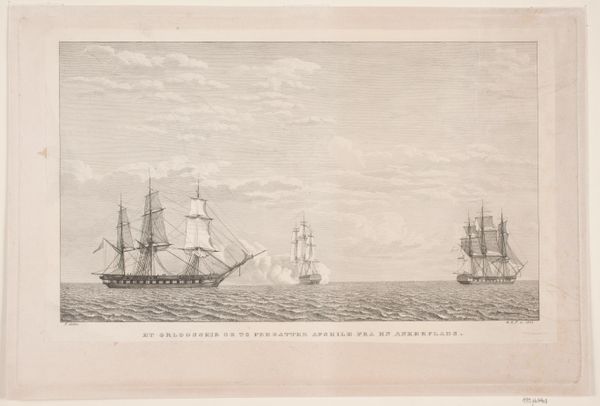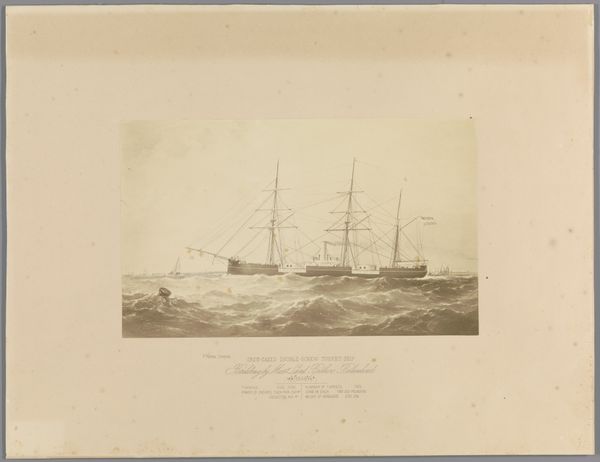
Ramtorenschip Prins Hendrik der Nederlanden varend op zee 1847 - 1874
0:00
0:00
Dimensions: height 508 mm, width 641 mm
Copyright: Rijks Museum: Open Domain
Curator: This is "Ramtorenschip Prins Hendrik der Nederlanden varend op zee," dating from 1847 to 1874, attributed to Johan Conrad Greive. The Rijksmuseum holds this drawing, print and etching. Editor: My immediate sense is one of quiet strength, despite the turbulent sea. There's a melancholic mood evoked by the limited palette. Curator: It’s interesting to consider the printmaking processes, the labor, the choices of paper. Given its function to render, copy and circulate images—how does that materiality alter our understanding of naval power or technological progress represented? The layering of etching and engraving must have taken considerable time. Editor: Absolutely. And situating this artwork in the broader narrative, we have to acknowledge that depictions of ships like this one are inevitably tied to Dutch colonial expansion. The technical mastery is undeniable, but how do we grapple with the ideologies these ships enabled and enforced across racial lines? The question becomes not just what is represented, but what is elided or whitewashed here. Curator: Perhaps those contradictions are inherent. It depicts, with such clarity, a technological advancement while hinting at something much darker and older within seafaring. This craft is really good when you observe it technically and within its temporal industry period. Editor: Yes, and to really probe this paradox requires dismantling the celebration of "progress" and unveiling its less visible ramifications of colonial exploitation, class division, ecological exploitation, as seen even by how the waves crash. Curator: That invites crucial reflection. It pushes us beyond mere appreciation of the print to a critical awareness of what's at stake in viewing and interpreting such images within their specific cultural historical context. Editor: Precisely. Understanding it, then, isn’t just about the artistry; it’s about confronting a more complex picture about social inequities and historical exploitation during maritime imperial ventures.
Comments
No comments
Be the first to comment and join the conversation on the ultimate creative platform.
